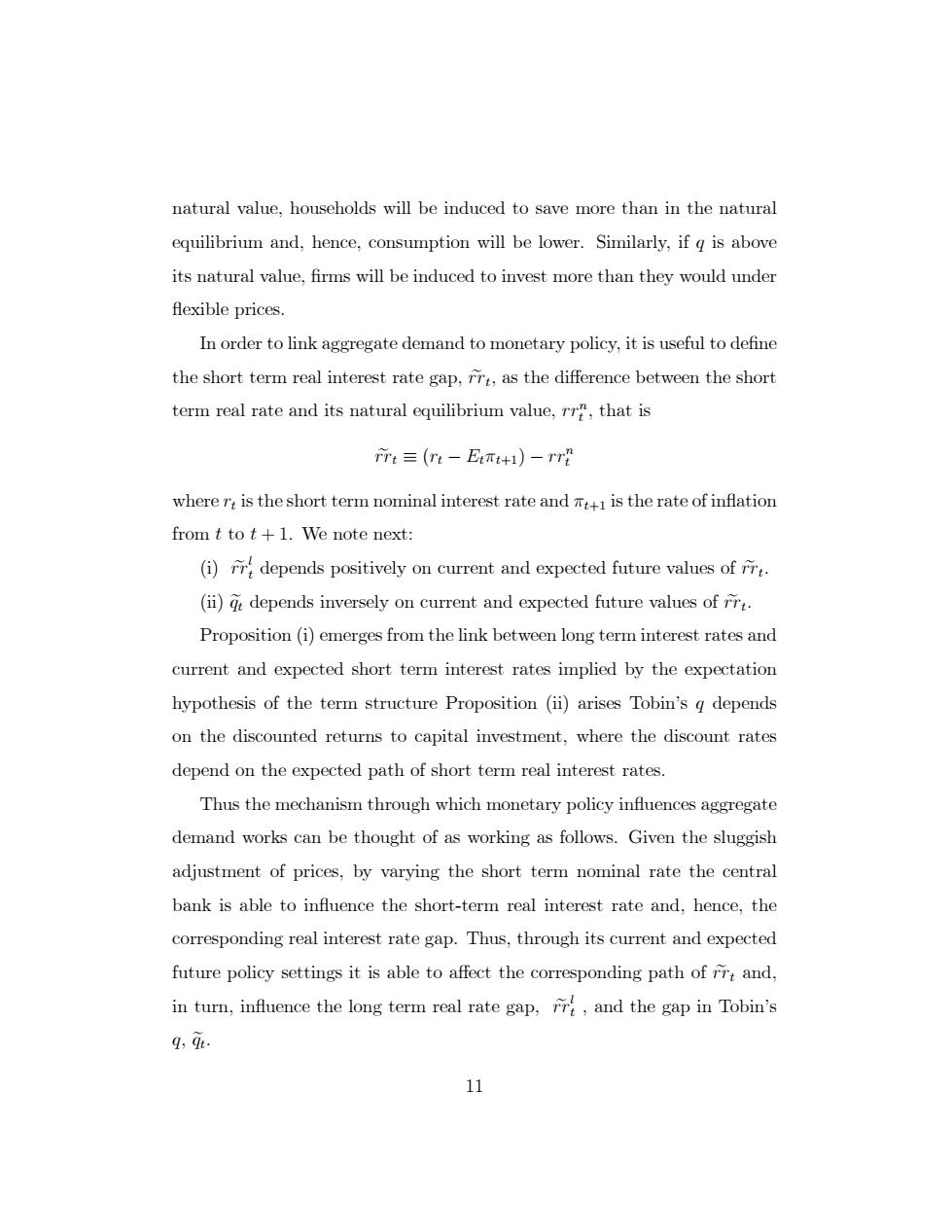正在加载图片...

natural value,households will be induced to save more than in the natural equilibrium and,hence,consumption will be lower.Similarly,if g is above its natural value,firms will be induced to invest more than they would under flexible prices. In order to link aggregate demand to monetary policy,it is useful to define the short term real interest rate gap,rrt,as the difference between the short term real rate and its natural equilibrium value,rr,that is rTt三(rt-EtTt+1)-Tr where rt is the short term nominal interest rate and t+1 is the rate of inflation from t to t+1.We note next: (i)rdepends positively on current and expected future values of rrt. (ii)gt depends inversely on current and expected future values of rrt. Proposition(i)emerges from the link between long term interest rates and current and expected short term interest rates implied by the expectation hypothesis of the term structure Proposition (ii)arises Tobin's g depends on the discounted returns to capital investment,where the discount rates depend on the expected path of short term real interest rates. Thus the mechanism through which monetary policy influences aggregate demand works can be thought of as working as follows.Given the sluggish adjustment of prices,by varying the short term nominal rate the central bank is able to influence the short-term real interest rate and,hence,the corresponding real interest rate gap.Thus,through its current and expected future policy settings it is able to affect the corresponding path of rr and, in turn,influence the long term real rate gap,rr,and the gap in Tobin's 9,9t- 11natural value, households will be induced to save more than in the natural equilibrium and, hence, consumption will be lower. Similarly, if q is above its natural value, Örms will be induced to invest more than they would under áexible prices. In order to link aggregate demand to monetary policy, it is useful to deÖne the short term real interest rate gap, rre t , as the di§erence between the short term real rate and its natural equilibrium value, rrn t , that is rre t (rt Ett+1) rrn t where rt is the short term nominal interest rate and t+1 is the rate of ináation from t to t + 1. We note next: (i) rre l t depends positively on current and expected future values of rre t : (ii) qet depends inversely on current and expected future values of rre t : Proposition (i) emerges from the link between long term interest rates and current and expected short term interest rates implied by the expectation hypothesis of the term structure Proposition (ii) arises Tobinís q depends on the discounted returns to capital investment, where the discount rates depend on the expected path of short term real interest rates. Thus the mechanism through which monetary policy ináuences aggregate demand works can be thought of as working as follows. Given the sluggish adjustment of prices, by varying the short term nominal rate the central bank is able to ináuence the short-term real interest rate and, hence, the corresponding real interest rate gap. Thus, through its current and expected future policy settings it is able to a§ect the corresponding path of rre t and, in turn, ináuence the long term real rate gap, rre l t , and the gap in Tobinís q, qet . 11